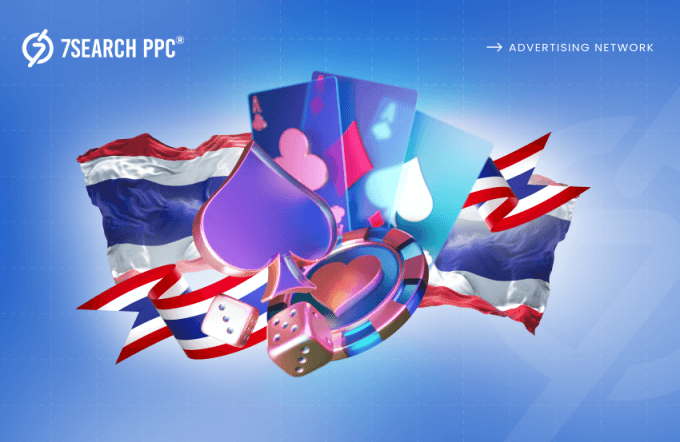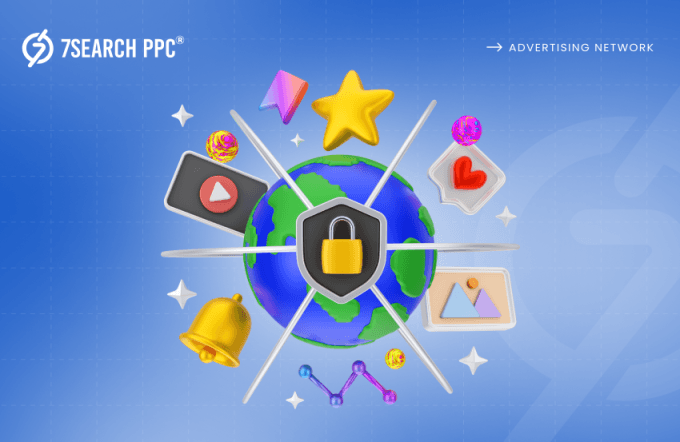Imagine you have got it all: a killer website design, trendy content that resonates with the right audience, and elements that work effortlessly. Yet, there’s a disconnect.
Your analytics tell a story where your website is deserted, and web traffic is negligible. You’ll keep on wondering why, thinking there’s something wrong with your strategy. But is that the case?
Website traffic can depend on lots of factors, and it isn’t always necessarily your fault.
So, if you’re seeing yours drop or are confused about it, this blog is for you. We will go over what web traffic is, why it’s needed, and the multiple ways in which you can achieve it, with a special focus on paid traffic. Keep on reading to get the best out of your web traffic.
Web Traffic: Got Visitors?
Think of your website as a room with no door. It’s open for all to enter, and nobody needs to knock- they can just walk right in. These visitors are your traffic. Doesn’t matter if they left after a few seconds or stayed over browsing through for an hour.
If they like what they see, they will be called your good-quality traffic. But if they didn’t, that’s your poor-quality traffic right there. Ideally, you should be aiming for good-quality traffic.
Web traffic refers to the total volume of users who visit and explore your website over a set period of time. It is simply a way to measure how many people are viewing your website and navigating through different web pages. You invite in this traffic through multiple different strategies, including paid, organic, and social.
Let’s understand this with an example. Suppose you ran an ad that linked back to your website. Out of the 500 impressions it received within a day, 50 users clicked on it. These 50 users who visited your website through it will be considered your website’s traffic of the day.
Why Web Traffic is Needed
The question is, why would you want people to visit and come over to your website? We have a few answers:
Indicates that your efforts are giving results
Web traffic is an indicator that all the effort you have put into drive traffic to your website is paying off. You can analyze what marketing channels are the most active in diverting visitors to your site and choose to optimize or discard the ones that don’t work.
Build up awareness for your brand
When visitors land on your website, chances are, they are going to take a look around and explore your website and other content. This will build awareness for your brand, regardless of whether they make a purchase or not. Visitors will start recognizing your brand, keep it at the top of their minds, and maybe even pass it on to others.
Leads to conversions
Not every visitor you receive on your website is going to convert, but many of them will. You will either get leads, which you can then nurture into customers. Or if you’re extremely lucky, you will straightaway get conversions. The higher your pool of website visitors is, the more chance you have with potential customers.
Helps in organic rankings
Google will take notice if your website starts receiving new traffic. They will push your website to the top of the rankings if it performs well, ultimately leading to higher organic traffic. Visitors will double in number, and your website will get a broader reach than before.
Provides metrics for improvement
Analyzing the web traffic can help you determine how visitors engage with your website. The pages they visit, the content they skim through, where they click the most, and where most of their session is spent. Keeping all this in mind, you can further update your content and website design to make the experience better for your visitors.
Credibility to your business
A significant amount of increasing traffic is a signal that your ads, and indirectly your business, are gaining credibility.
Where Does Web Traffic Come From?
There’s not one, but multiple ways to drive traffic to your website. Not all generate the same results, and it is better to quickly find strategies that work. Here’s to list a few.
Organic Traffic includes visitors that come from unpaid sources, such as through rankings on the SERPs. Suppose you sell customized sneakers. Now, if someone searches for the term ‘custom sneakers’ and your website is optimized enough to show up for it, then the traffic you receive from it will be considered organic traffic.
Paid Traffic is when you get users to visit your website through paid ads. These can be any form of search ads, display ads, or paid social media ads that redirect users back to your website when clicked on. It is comparatively easier to work with this kind of traffic as ads are pretty targeted to your desired audience.
Social Traffic includes users that are directed from social media platforms. So, if someone might have come across your profile, loved your posts, and was intrigued enough to check you out, then it would constitute social traffic.
Direct Traffic specifies users who visit your website after directly searching for your business or products in the search bar. This kind of traffic is usually repeated traffic that is well aware of your business and is highly likely to convert into a full-on paying customer.
Email Traffic is the number of people who are directed to your website after clicking on a link in one of your emails. Again, these are most likely repeat visitors who have either received newsletters or promotional emails because of their supposed interest in your business.
Referral Traffic is users who land on your website after being redirected through a link on another website. For instance, if someone has mentioned your business in their content and linked back to you, then users can simply follow it, which would then lead them to your website.
Analyze Your Web Traffic
The web traffic in your hands is already a treasure, but do you know you can find some hidden gems within it? But to get there, you need to do some digging on your web traffic first. And when you do that, ask yourself-

What’s the average time spent on each web page?
This shows how long users stay on a web page before taking an exit. Based on your niche and page type, it might differ from one page to another. You can get insights into how each page is performing and which ones have more traffic than the others.
What are the bounce rates?
A visit is counted as a bounce when a user visits your website for few seconds and takes an exit without triggering any further request or action. Ideally speaking, a 40% bounce rate is considered to be good. But anything that reaches 60% and above is alarming.
Are the visitors unique or repeat?
Unique visitors are the ones visiting your website for the first time ever. In contrast, repeat visitors are users returning to your website after a previous session on it. It gauges how well your website is gaining reach, as well as the user’s tendency to complete a purchase during their visit.
What is the actual source of traffic?
Where does your traffic originate from? You can check whether your traffic is paid, social, direct, organic, referral, or through emails. Narrow it down to what’s working and what isn’t, and make changes accordingly.
What do the most visited pages say?
Check for the pages that users visit the most. It tells you about the user’s interest in the kind of content, information, or elements that they prefer better. You can optimize this page and push it further for more reach and exposure.
Are you getting desired conversions?
Conversion rate refers to people who take the desired action on a website. This can either be making a purchase, signing up for a newsletter, answering a form, and so on. These are direct indicators of whether your marketing efforts are meeting the right people and having them convert.
What pages have high exit rates?
Exit rate is the percentage of visitors who leave a specific page of the website. For content-driven pages like blogs and case studies, a 70% – 80% exit rate is expected. However, pages that are deeper down the funnel, like product and cart pages, should aim for a 20% to 40% exit rate.
What do total visits say?
And obviously, the big number indicating the total number of visits you receive on your website. Make comparisons daily, weekly, or monthly to analyze the trend to see how the visits have changed over time.
You will likely see different measures for different pages. But don’t get alarmed just yet. Depending on what your industry is, the stage of business you are in, and the type of page we are talking about, results can vary by a long shot. Align everything with your marketing efforts and compare with industry standards to get a clear picture of where you stand.
Stuck With Poor-Quality Traffic?
We know how much time and effort it takes to build up quality web traffic through unpaid means. But does that mean your website should settle with low traffic and your business should take the hit? Definitely not. Paid traffic is an approach you can take to build web traffic quickly.
Firstly, here’s how you can check if your traffic is actually poor quality.
- Bounce rate is 60% or higher (also depends on the page and type of visitor)
- Low conversion rates compared to overall traffic (can indicate poor quality of traffic)
- Average session of visitors on the website is below 2 minutes (can result in your website ranking lower)
- Declining trend of total visits
- Exit rate that sits above 30%
- Percentage of returning visitors is lower than 30%
We Recommend The Paid Route
You’ve probably heard about paid traffic before. Some love it for its results, others don’t find much difference using it. In reality, paid methods do get you good-quality traffic when used correctly.
Paid traffic essentially includes users who have converted through online ads. You run your campaigns through ad networks, make them reach users on different parts of the internet, and direct them back to your website by adding a link.
Here, targeting plays an extremely crucial role. Quality traffic comes from how relevant your visitors are to your business. Once you convey your message to users who are actually interested in it, web traffic will naturally increase. So, it needs to be spot-on and should be based entirely on where your target audience is.
Advertising networks continue to one-up their targeting features to help advertisers better reach their target market. Following are the ways based on which you can target your advertisements.
Demographic Targeting
Demographic targeting involves targeting ads based on certain ranges of age, gender, income, and other standard demographics of the target market. Such tailored ads are often personalized and depict how a business can help the viewers.
Geotargeting
Geotargeting allows advertisers to target ads based on their location. It can be used to drive in-store traffic by targeting customers within a certain radius of the store. You can also promote regional products that aren’t available anywhere else or only target regions where you get the most quality traffic from.
Psychographic Targeting
It focuses on targeting ads based on the online behavior, interests, values, lifestyle, and preferences of the users. It makes an effort to connect ads with the audience by studying their beliefs and attitudes and aligning them with them.
Contextual Targeting
Contextual targeting works by placing ads based on the context of the web page. This way, you can reach an audience who has actively displayed an active interest in related products and services and get them to check out your website as well.
Advanced Targeting
Advanced targeting makes use of the latest technological tactics to reach the right users. This can include targeting only a certain type of device (computer, mobile, tablet, TV screens) and OS like Android and iOS.
Retargeting
Retargeting helps you target people who have already interacted with your business or website once and are already familiar with it. It works on browser cookies that collect data from the users and target them based on their behavior.
Conclusion
And that’s a wrap. Web traffic is a complicated thing at first, but once you get the hang of it, you will be able to achieve it quite easily. It’s about time you realize how important of a metric this is to carry your business forward. A constant downward trend of web traffic is a cause of alarm, and that is when you need to reevaluate every bit of it. Understand how users engage with your website, what page they spend most of their time on, and how you can make them get the very best experience.
Always aim for high-quality traffic, and conversions will eventually follow.
Frequently Asked Questions
What is web traffic?
Ans. Web traffic refers to the number of users who visit a website for a certain time period.
What are the different sources of web traffic?
Ans. Web traffic can come through paid advertising channels, social media platforms, organic website rankings, direct searches, email conversions, and clicks on referral links.
What is considered to be good-quality web traffic?
Ans. Good quality traffic refers to visitors on your website who align with your target audience, engage with your content, follow a consistent growing pattern, and have the potential to be turned into customers.
How to identify poor-quality web traffic?
Ans. Higher bounce rates, low conversion rates, low average session websites, high exit rates, and lower percentage of returning visitors are signs of poor quality web traffic.
What to do when you have poor-quality web traffic?
Ans. When you experience poor-quality traffic, analyze your website’s content and promotional strategy. Work on your SEO, use paid methods to target only the relevant audience, and leverage social media to your advantage.


















